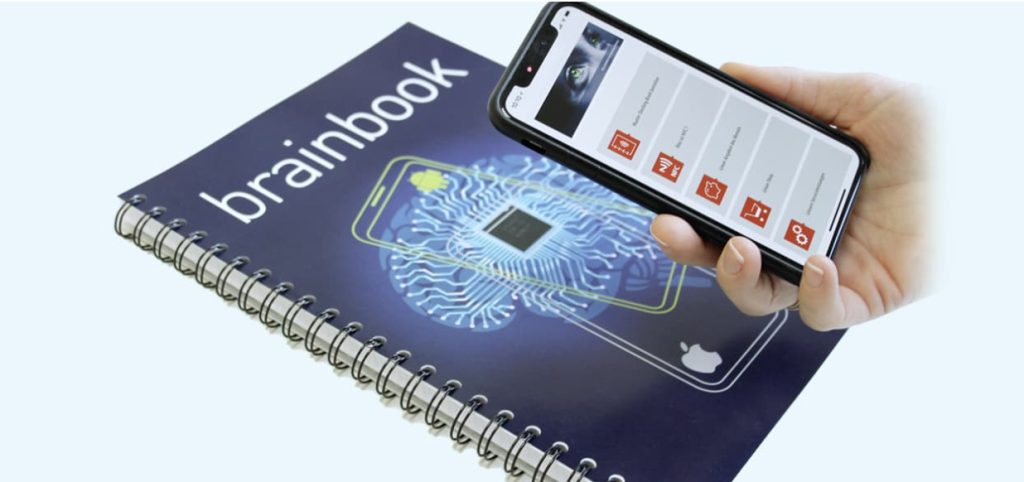
Today, appointment calendars, notebooks and schedulers come in both printed and electronic formats. Meanwhile, modern technologies allow direct multimedia linking of information contained therein.
More and more people in society appreciate the advantages of both information media in their daily work and private lives when organizing themselves: When using a printed appointment planner, no electronic output device and no connection to the World Wide Web is necessary. Using a digital appointment calendar alone makes it easy to update the respective data, especially on online platforms. Meanwhile, many people use both a conventional and electronic notebook as an update to individual security.
Print meets NFC
Under the term “Brainbook”, the Brendow company in Moers, Germany, is forging a path into printed electronics. The product, which has been part of the portfolio since 2018, is based on a notebook that can be bound in any way and has an NFC chip integrated visibly or invisibly into its cover. With the help of this chip, the notebook is connected to the Internet via smartphone or tablet and NFC coupling by placing the device on the book surface.
Companies use this functionality to provide their customers with complex services simply and quickly as a web service, to provide information when planning and calling up material deliveries, or to send current special offers from the supplier industry. Compared to a QR code, the NFC chip has the advantage that it can store a limited amount of individual data and that its data content can be rewritten at any time.
Smart printing
Smart planning aids are the business of Lindocastelli, a company based in Herzebrock-Clarholz/Gütersloh (Germany), which, according to its advertising, combines “haptic brand communication with digital touchpoints.” This concept refers to the cross-media publications called “Urban Timer” or “Smart Bullet Journals”, which are individual notebooks that offer continuous planning structure thanks to a digitized calendar service. For this purpose, the printed products are linked to the information from the digital calendar by means of QR codes and allow access to the stored content with the aid of smartphones and tablets.
The two-color printed, thread-stitched appointment calendars with elastic band and pen loop can also be upgraded with individual advertising on the book cover via embossing and digital printing, and optionally with book color cutting. Customers can also receive a digital “calendar lobby” with advertising space or special individual landing pages to maintain a long-term, sustainable presence in their daily lives.
“Digital” stationery
Stationery manufacturers such as Moleskine from Milan (Italy) are currently launching innovations tailored to the digital world. With the help of the “Smart Writing Set Ellipse” and “Ncoded” technology, written records can be digitized. Users are sent a “Smartpen” ballpoint pen together with a USB cable and the “Paper-Tablet” paper notebook. Apparently, the “smart” pen recognizes the notepad or appointment book via infrared sensor and digitizes the paper with the written information.
Notes are saved as PDF, JPG, vector or text. Audio recordings are also possible with the pen, whose battery has a runtime of five hours. Data transfer is done with Bluetooth 4.2, and information is saved in offline mode for later sending as SMS, MMS, e-mail or WhatsApp message. Finally, the “Smartpen” based on “Ncoded” also works with writing pads from other brands – easy management is possible with the Moleskine Notes app.
Your
Frank Baier
Editor-in-Chief “Bindereport”
This text is reproduced with kind permission of Müller Martini, you can read the original article first published here
